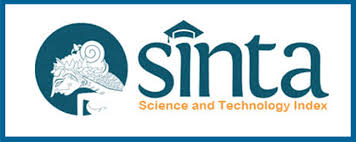An Analysis of Speech The Presidential Candidates Debate of United States in 2020
DOI:
https://doi.org/10.36057/jilp.v6i1.552Keywords:
Speech Act, Illocutionary Act, Perlocutionary Act, Debate, Political LanguageAbstract
This research aims to see the impact caused by candidates presidential of United States in 2020 in use of speech acts, where an utterance contains pragmatic meanings to make the listener do what speaker wants through speech, such as statements, orders, offers, thanks and the forms of speech that had have direct effect is like punishing. This analysis is included in pragmatic theory so that it is useful to increase the knowledge of readers from linguistic circles. In speech act theory, this research focuses on the theory based on Austin (1962) then for the illocutionary acts based on Searle (1979).
The researcher applies a qualitative description method to collecting data by Djajasudarma (2006), method to analyze data this research applies a pragmatic equivalent method by Sudaryanto (1993), technique to collecting data researcher applies theory of Djajasudarma (2006), including: tapping records, note-taking techniques. The researcher applies technique of analyze data called the determining element sorting technique by Sudaryanto (1993).
There are 309 utterances or 100% of a whole data, while illocutionary acts are further grouped into five parts, they are assertive type as many as 184 utterances or equivalent to 59% then directive type as many as 70 utterances or 22%, then the commissive type with 49 utterances or 15%, followed by the expressive type with 5 utterances or 1.6% and the declarative type with at least 1 utterance or about 0.3% and last perlocutionary acts found in this data were 139 or equivalent to 44%.
Downloads
References
[2]Austin, J. L. (1962). How To Do Things with Words. Oxford: The Clarendon Press.
[3]Ballmer, T., & Brennenstuhl, W. (1981). Speech Act Classification A Study in the Lexical Analysis of English Speech Activity Verbs. New York: Springer-Verlag Berlin Heidelberg.
[4]Binder, P., & K., S. (2013). The Language Phenomenon. London: Springer-Verlag Berlin Heidelberg.
[5]Carey, J. W. (2008). Communication as Culture. New York: Routledge.
[6]Chistiano, T., & John, C. (2009). Contemporary Debates in Political Philosophy. Chichester: Blackwell Publishing.
[7]Collins, L., & Jisum, C. (2019). The Role of Linguistics Studies on The Political Debate. Linguistics and Culture Review, 48-59.
[8]Djajasudarma, T. F. (2006). Metoda Linguistik (2nd ed.). (W. Nadeak, Ed.) Bandung: PT Refika Aditama.
[9]Dylgjeri, A. (2017). Analysis of Speech Acts In Political Speeches. European Journal of Social Sciences Studies, 19-26.
[10]Hashim, S. S. (2015). Speech Acts in Political Speeches. Journal of Modern Education Review, 699–706.
[11]Hidayat, A. (2016). Speech Acts: Force Behind Words. English Education: Jurnal Tadris Bahasa Inggris, 1-12.
[12]Kristina, L. N., & Ambalegin. (2019). Illocutionary Acts In President Obama’s Election Night Speech. Journal BASIS, 267-276.
[13]Lanigan, L. R. (1977). Speech Act Phenomenology. The Hague, Netherlands: Martinus Nijhoff.
[14]Nurkhamidah, N. (2020). Illocutionary Speech Acts on Donald Trump’s Speech In Addressing the Covid-19 Breakout. Journal of Research on English and Language Learning, 119-126.
[15]Rizki, S., & Jelena, G. (2020). An Analysis of Speech Act of Omar Mukhtar's Utterances in Lion of The Desert Movie. Englisia: Journal of Language, Education, and Humanities, 195-210.
[16]Rosyidi, A. Z., Mahyuni, & Muhaimi. (2019). Illocutionary Speech Acts Use by Jokowidodo in First Indonesia Presidential Election Debate 2019. International Journal of Multicultural and Multireligious Understanding, 735-740.
[17]Searle, J. R. (1979). Expression And Meaning. New York: Cambridge University Press.
[18]Searle, J. R., Ferenc, K., & Bierwisch, M. (1980). Speech Act Theory and Pragmatics. Dordrecht: D. Reidel Publishing Company.
[19]Sudaryanto. (1993). Metode dan Aneka Teknik Analisis Bahasa. Yogyakarta: Duta Wacana University Press.
[20]Sugiyono. (2013). Metode Penelitian Kuantitatif Kualitatif dan R&D. Bandung: Alfabeta.
[21]Tsoumou, J. M. (2020, June 8). Analysing Speech Acts in Politically Related Facebook. Journal of Pragmatics, 167, 80-97.
[22]Wahyuni, A. (2018). The Power of Verbal and Nonverbal Communication in Learning. Advances in Social Science, Education and Humanities Research (ASSEHR), 125, 80-83.
[23]Yule, G. (1996). Pragmatics. Great Clarendon Street: Oxford University Press.








